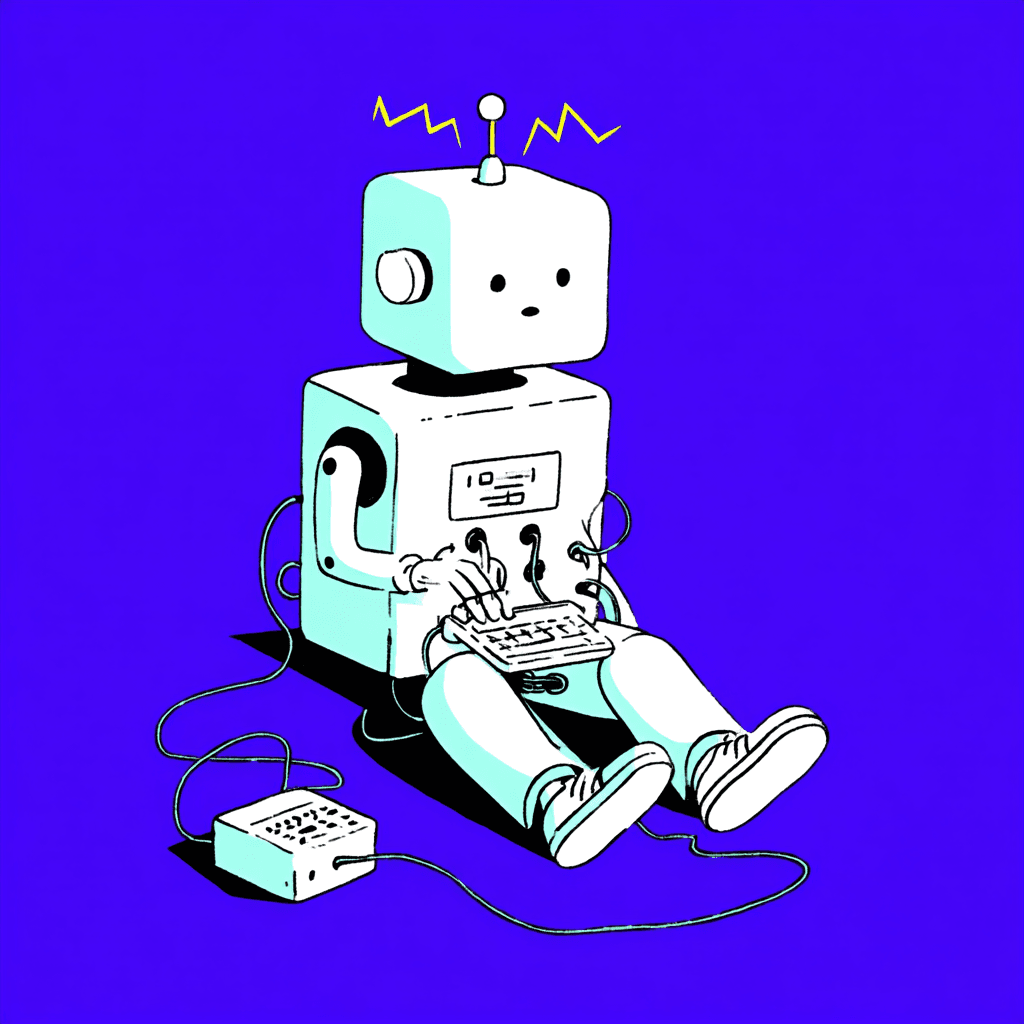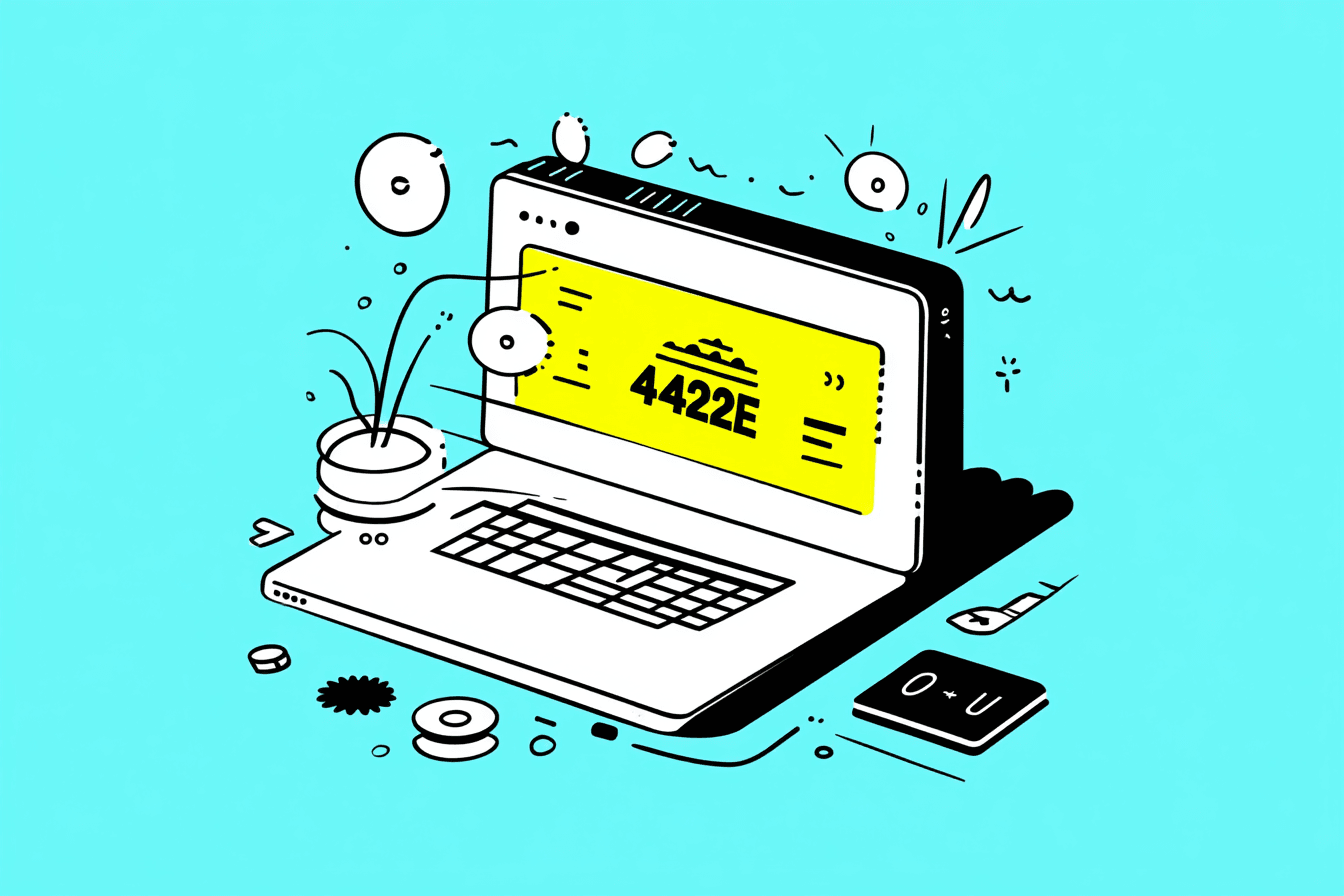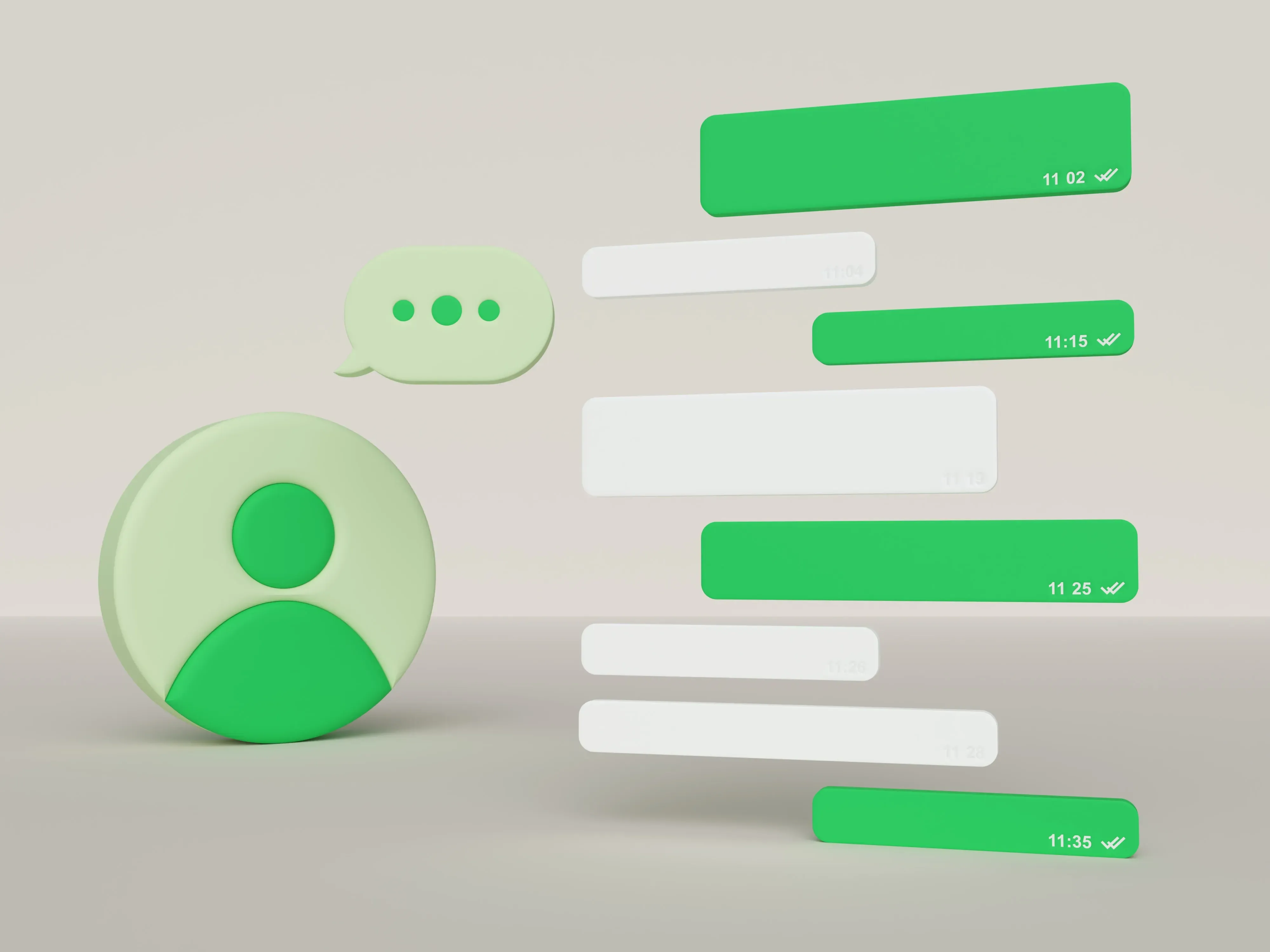The Chatbot API is the foundation of modern chatbot software and automated communication – in e-commerce, customer support, and omnichannel marketing. No platform, bot, or workflow can flexibly scale, offer AI-supported service quality, or easily access new channels and data sources without this programmable interface. For brands, online shops, and agencies in the DACH region, 2025 opens up an entirely new world of efficient, secure, and personalized customer care.
What is a Chatbot API?
A Chatbot API (Application Programming Interface) connects chatbots, messengers, email, live chat, and backend systems such as shop, CRM, or ERP. It is the bridge between your existing business software and all channels that are important for communication, commerce, and service. Modern APIs control how bots receive, process, and send messages – whether text-based, AI-driven, or as a multichannel solution via WhatsApp, Facebook Messenger, email, or web chat.
The definition goes further: A true chatbot API is the programmable core that allows companies to automate workflows, intelligently connect data, and maintain control over all customer interactions – from first-level support to complex AI agents and self-service solutions.
Why companies need a Chatbot API – benefits and relevance in e-commerce
- Central integration: All communication channels (WhatsApp, Messenger, email, live chat) run through one platform. This creates efficiency, transparency, and maximum flexibility in customer service.
- Automation & AI potential: With integrated LLMs and AI agents (e.g., GPT-4, ChatGPT, Botpress), Chatbot APIs handle large volumes of inquiries, answer FAQs, process orders, and conduct satisfaction surveys – individually, around the clock, and personalized per user.
- Scalability: Growing companies can seamlessly expand channels, bots, users, and integrations at any time – without media disruptions or duplicate development efforts.
- GDPR and data security: Leading providers rely on EU hosting, role management, and encrypted transmission. This ensures compliance within the DACH region.
- No-code & open source: Modern APIs can be used even without programming skills – with no-code platforms (e.g., Chatarmin) or as open-source implementations for maximum control.
Especially in e-commerce, Chatbot APIs are the foundation for automated communication at all touchpoints: from order status and returns to product recommendations, WISMO requests, upselling after ticket completion, or invoice inquiries. Thanks to programmable interfaces, brands control all channels, data, and processes in one dashboard – fully integrated from Shopify to WooCommerce and Shopware.
How does a Chatbot API work technically?
API endpoints, HTTP requests & responses at a glance
- API endpoints: Fixed addresses (e.g., /sendMessage, /status) where requests are sent and responses are received.
- HTTP requests: Your systems (shop, CRM, bot) send commands to the API – typically as POST (e.g., to send a message) or GET (to retrieve information).
- HTTP responses: The chatbot or backend returns structured responses – e.g., with shipping information, return labels, or product suggestions.
- Controlling data flow: Via central interfaces, the chatbot interface links any number of bots, channels, and backend systems: REST API, open protocols, and webhooks allow maximum customization and connectivity – for developers or via no-code flow builders.
Core functions of modern Chatbot APIs
1. Multichannel capability & omnichannel communication
- Connect WhatsApp, Facebook Messenger, email, phone, live chat, and web efficiently in one system.
- All inquiries come in at one place, are prioritized, answered, forwarded, or routed to the right agent (or AI bot).
2. Automated workflows & AI integration
- With AI chatbots or AI agents (LLMs), customer inquiries, FAQs, returns, status queries, or personalized product suggestions are handled automatically and with high quality.
- The API enables the integration of external data (shop API, CRM, shipping, payment, etc.) for smart self-service and proactive support.
3. Easy integration with no-code & open-source platforms
- No-code solutions (e.g., Chatarmin) offer drag-and-drop builders, templates, automated integrations, and intuitive workflows – even for teams without developer resources.
- Open-source APIs (Botpress) allow maximum control, customization, and self-hosting.
4. Security, data protection & GDPR compliance
- Encrypted transmission, role-based rights and access management, audit logs, and full EU hosting ensure compliance even in the most sensitive industries.
The best Chatbot APIs 2025 – provider comparison
| Provider | Integrations (Shop/CRM) | Multichannel support | GDPR compliant | AI features (LLMs) | Open source | Cost structure |
|---|---|---|---|---|---|---|
| Chatarmin | HubSpot, Zendesk, API | Shopify, WooCommerce, Klaviyo | Yes | Yes | Yes | License |
| OpenAI API | Basic | Messenger, Web | partly | GPT-4, AI agents | No | usage-based |
| Google Dialogflow | Strong | Messenger, Voice, Web | partly | Google LLM, NLU | No | usage-based |
| Microsoft Copilot | Microsoft 365 & Graph, Dynamics 365 (Sales/Service/Finance) | Teams, Web; via Copilot Studio also WhatsApp, SMS/ACS Chat | Yes | OpenAI models via Azure (e.g. GPT-4o), agents/automations | No | License (per user/month) |
| Twilio Studio | Solid | SMS, WhatsApp, Voice | partly | Limited AI integration | No | by volume |
| Meta Messenger API | Messenger, Shops | WhatsApp, Facebook | partly | AI-powered | No | usage-based |
| Amazon Lex | Tight AWS integration (Amazon Connect, Lambda, Bedrock), CRM via APIs | Voice & Chat (Web/Mobile), Contact Center | Yes | NLU, ASR/TTS; Gen use cases via Bedrock | No | usage-based |
| Botpress | APIs, CRM, ERP | Messenger, Web, Voice | Yes | Open-source LLMs | Yes | Open source/free |
| Zendesk API | CRM/Support | Email, Chat, Social | Yes | Rules, AI workflow | No | License |
| Superchat | Shopify, CRM via HubSpot, others via Zapier/integrations | WhatsApp, Facebook/Instagram DM, email, web chat, SMS | Yes | AI chatbot & automations (campaigns/workflows) | No | Packages/license |
| Userlike | CMS/shop/CRM integrations (e.g. Shopware, WordPress, Jira etc.) | Website chat, WhatsApp, Facebook Messenger, Telegram, Threema, SMS | Yes | AI Automation Hub; optional GPT-4 connection | No | License packages |
Provider profiles
Chatarmin/ArminCX
Category: AI-first omnichannel chat & helpdesk
AI features: Yes
Integrations: Shopify, WooCommerce, Klaviyo
CRM: HubSpot, Zendesk, API
GDPR: Yes (EU)
USP: AI-first, WhatsApp, e-commerce-native
Chatarmin is the AI-powered chat & helpdesk platform for e-commerce brands with multichannel communication and GDPR-compliant EU hosting.
OpenAI API
Category: AI API & developer framework
AI features: GPT-4, AI agents
Integrations: API-based
CRM: custom
GDPR: partly
USP: highest AI quality, flexible
OpenAI offers the most powerful AI models for custom chatbots – flexible, but with its own data protection responsibility.
Google Dialogflow
Category: Conversational AI platform
AI features: Google LLM, NLU
Integrations: Google Cloud
CRM: via API
GDPR: partly
USP: strong NLU, scalable
Dialogflow impresses with strong speech recognition and multichannel capability – ideal for scalable chatbots but with cloud dependency.
Microsoft Copilot
Category: AI assistant for Microsoft 365
AI features: GPT-4o, automations
Integrations: Microsoft 365, Dynamics
CRM: Dynamics 365
GDPR: Yes (Azure EU)
USP: Office integration, business automation
Copilot brings AI directly into Teams, Outlook & co. – perfect for internal automation and AI-supported workflows.
Twilio Studio
Category: No-code chatflow builder
AI features: limited
Integrations: API, CRM
CRM: via API/Zapier
GDPR: partly
USP: flexible, messaging-focused
Twilio Studio offers simple automations for SMS, WhatsApp, and voice communication – ideal for support processes.
Meta Messenger API
Category: Social & chat commerce API
AI features: AI-powered
Integrations: WhatsApp, Facebook
CRM: via API
GDPR: partly
USP: social-first, commerce-ready
The Messenger API enables direct customer contact via WhatsApp and Instagram – ideal for social commerce.
Amazon Lex
Category: Voice & chat AI
AI features: NLU, ASR/TTS
Integrations: AWS
CRM: via API
GDPR: Yes (EU)
USP: AWS-native, scalable
Lex combines speech, text, and automation – ideal for AI-supported voice and chatbots in the AWS ecosystem.
Botpress
Category: Open-source chatbot platform
AI features: Open LLMs
Integrations: API, CRM
CRM: modular
GDPR: Yes (self-hosted)
USP: open source, full control
Botpress is an open, self-hosted chatbot platform – flexible, data-secure, and free.
Zendesk API
Category: Support & helpdesk automation
AI features: AI workflows
Integrations: CRM, support
CRM: native
GDPR: Yes
USP: strong automation, multichannel
Zendesk offers smart support automation with integrated AI and full data protection.
Superchat
Category: Omnichannel messaging
AI features: Chatbot, automations
Integrations: Shopify, HubSpot
CRM: Yes
GDPR: Yes (EU)
USP: WhatsApp, social, campaigns
Superchat unites WhatsApp, email, and social messaging – perfect for centralized customer communication.
Userlike
Category: Website & messenger chat
AI features: GPT-4, Automation Hub
Integrations: Shopware, WordPress
CRM: Yes
GDPR: Yes (DE)
USP: data protection, DACH focus
Userlike is the GDPR-compliant chat solution from Germany with modern AI automation and broad integrations.
How to choose the right Chatbot API?
Ultimately, the use case always decides! But be sure to consider the following points.
Integrations (Shop/CRM)
The API should integrate seamlessly with relevant systems such as Shopify, WooCommerce, HubSpot, or Salesforce. Goal: automated data usage, customer segmentation, and process linking without manual intervention.Multichannel support
Supporting multiple communication channels is essential. Ideally, the API covers WhatsApp, email, social media (e.g., Facebook, Instagram), web chat, and voice. Goal: consistent customer experience across all touchpoints.GDPR compliance / EU hosting
For companies in the DACH region, GDPR compliance is a must. Preferred providers host in the EU, have clear data processing policies, and provide auditability of logs – especially relevant when using external AI models.AI functionality (LLMs)
Modern Chatbot APIs should provide access to large language models (e.g., GPT-4, Claude, Gemini). Important features: draft replies, automated workflows, semantic understanding, and context-based personalization.
Goal: intelligent, scalable dialogues instead of purely rule-based responses.Cost structure
Two main models:- Pay-per-use → flexible and scalable with fluctuating volume.
- Fixed-price / license packages → predictable and often cheaper for ongoing operations.
The key is balancing cost transparency, scalability, and usage frequency.
Practical examples: How companies use Chatbot APIs in e-commerce
- WISMO (Where Is My Order): Customers ask in live chat, WhatsApp, or Messenger about their delivery status – the Chatbot API automatically retrieves shipping data and provides appropriate answers 24/7.
- Returns processing: Through email or messenger, customers automatically receive return labels, status updates, and FAQ solutions – completely without manual intervention.
- Upselling & cross-selling after support ticket: After completing a support request, your AI chatbot proactively suggests products, accessories, or promotions – personalized and with a direct shop link.
- Multichannel self-service: All commands (e.g., invoice request, abandoned cart, product consultation) run across channels (WhatsApp, Messenger, email) and are processed securely.
Advanced functions & best practices for optimal Chatbot API use
- Automated upselling, proactive notifications (low stock, promo codes, shipping info)
- Individual customization: self-service center, AI targeting, granular rights management, data masking
- Monitoring & audit logging: improved control, traceability, compliance security via logs and dashboards
- No-code publishing & open-source customization: for marketers and developers alike, simple workflows and complete individualization
Step-by-step guide: Chatbot API setup in e-commerce
Understand the API documentation
Start with your provider’s documentation (e.g., Chatarmin, OpenAI). It shows which endpoints are available, how authentication works, and which parameters you need for your use case. Proper preparation will save you errors later during testing.Generate an API key
After registration, you receive your personal access key. Keep it safe – it authenticates your requests to the API.
Important: Never share publicly or store in open scripts.Set up endpoints
Define and implement relevant interfaces – such as /sendMessage, /getOrderStatus, or /createTicket. You can link these directly in your shop system, CRM, or flow builder to trigger automated processes.Configure workflows
Define which events (e.g., new message, order, inquiry) should trigger which actions. Examples: automatic shipping confirmation, CRM entry for new contacts, or starting a return process. Build fail-safes and handover paths for complex cases.Test integration
Use a sandbox or test environment to check all processes. Verify that requests and responses are processed correctly. Monitor logs and implement monitoring to identify sources of error early.Go live & optimize
Launch your chatbot and observe user behavior. Collect data, optimize logic, and gradually expand functions, integrations, and channels. This way, you develop a high-performing, scalable chatbot that delivers real value in e-commerce.
Conclusion: Chatbot API as the foundation for scalable customer service, marketing, and sales
In 2025, the Chatbot API marks the central interface for smart, automated, and secure customer communication – especially for e-commerce decision-makers in the DACH region. Whether as a no-code platform or individual backend integration: only those who rely on multichannel, AI, GDPR, deep shop integration, and fast automation will remain efficient, scalable, and successful. Chatarmin combines all of this – as an AI-first, e-commerce-first API solution with GDPR compliance and deep Shopify integration.
FAQ: The most important questions about the Chatbot API (2025)
What is the difference between a Chatbot API and classic bot software?
A Chatbot API is flexibly programmable, controls multichannel communication, offers open endpoints, and enables a wide range of automation (unlike purely template-based bot builders).
How do I ensure data protection & GDPR compliance in the Chatbot API?
With encrypted data transmission, EU-based component hosting, clear role and access rights, and full logging of all API access – as offered by Chatarmin, specifically for DACH companies.
Are no-code solutions suitable for complex workflows?
No-code API platforms like Chatarmin or Botpress cover 90% of all e-commerce standard processes. For edge cases or specific customization, backend-level API integration is recommended.
What are common pitfalls in Chatbot API setup?
Unclear permissions/keys, insufficient data integration (shop/interfaces), lack of multichannel support, or rigid bot logic. Best practice: test setup, monitor logs, verify permissions.
How does customer service benefit specifically?
Fewer manual routine tasks, shorter processing times, cross-channel service quality – and a smart system that automates both repetitive and individual requests.
Test Chatarmin now for your e-commerce and elevate your customer service, marketing, and sales with AI chatbot automation, multichannel communication, and EU GDPR compliance to the next level. Schedule a demo directly with our experts.








